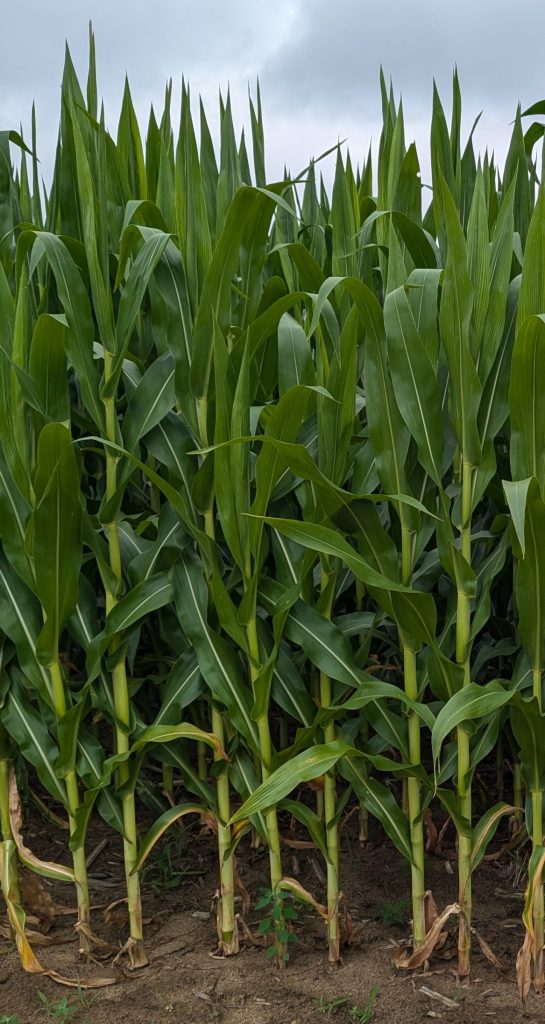
View weather and climate conditions this week in Wisconsin
Here are this week’s take home points about the weather, scroll down for the full report:
Current Conditions
- Most of the state experienced minimal precip last week, but some localized areas received >1” from thunderstorms.
- Temps were cooler than normal for most, but this didn’t come without some daily highs reaching well into the 80’s or even low 90’s.
Impact
•Soil moisture levels are in lower percentiles compared to last week, with increases in the percent that is adequate.
•WI remains free from all USDM drought categorizations as corn and soybeans enter their reproductive phases.
- Corn– silking @ 40% complete; big strides in silking progress from last week, running ahead of normal pace.
- Soybeans– blooming @ 47% complete; lagging 10% behind in the state and states to the W/NW.
- Wheat harvest– 31% completein the state, above the 5-year average of 19% for this week.
•GDDs since April 1 are now approaching 1800 (1200) units in the far southern (northern) counties.
Outlook
•Precip chances are forecasted across WI over the next 7 days, with higher likelihood in the early week.
•Higher likelihood to stay warmer-than-normal to wrap up July & into the first days of August, with probabilities leaning towards higher-than-normal precip.
•The warmer-than-normal conditions have a higher probability to continue through the summer into early fall with a La Niña pattern taking shape.
What does this mean for you? Here are some things to consider for your farm this week:
Crop Development
•Soil moisture is adequate or even high in most places. Be cautious about trafficking fields during muddy conditions to avoid rutting. Remember, compaction occurs when soil water content is at, or slightly above, field capacity!
•Hot days mean accumulations of 20+ GDUs per day. Keep on top of your growth stages to time other applications.
•Scouting for crop stage and development of issues is very important this year as the wet spring means that there is a lot of variability in fields and across farms.
Nutrient & Herbicide Applications
•Consider splitting nutrient applications if possible
•Consider using urease and nitrification inhibitors to minimize leaching or denitrification.
Manure Applications
•Runoff risk is present in parts of the state in the next week. Be mindful of the possibility of runoff and plan manure applications accordingly. Check the DATCP runoff risk advisory forecast here.
•After wheat harvest there is an opportunity for manure and cover crops, see info here.
Pest Management
•Western bean cutworm is in peak egg-laying season. Sign up to receive text alerts when pests are in your region here.
•Japanese beetle emergence is underway, see here for management information.
•Take fusarium and DON risk into account when harvesting wheat, more information here.
•Tar spot and white mold have now been seen in multiple locations in the state, management information available here.
Forage Management
•Ensure wide swaths when mowing alfalfa to increase rate of drying and harvest sooner, reducing risk of rain damage.
•Avoid hay fire risks. Be aware of hay moisture and monitor stack temperature when putting up dry hay, consider wrapped bales.




